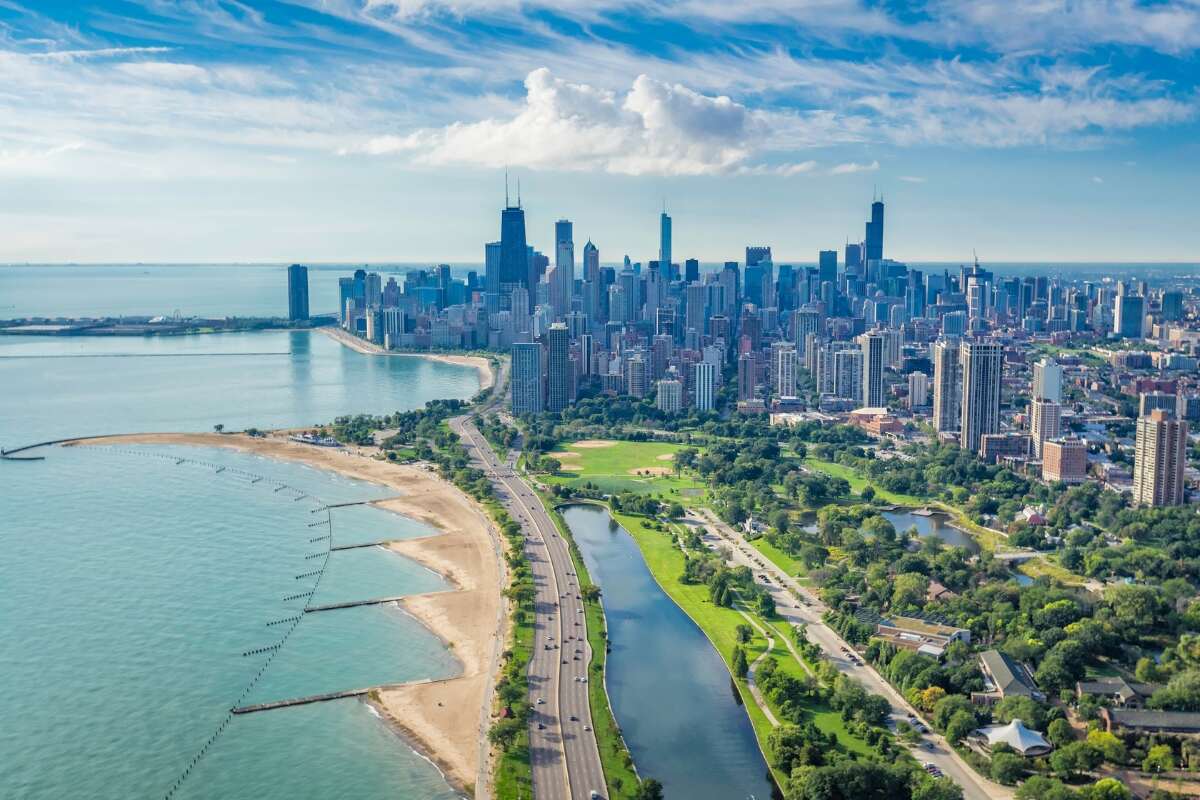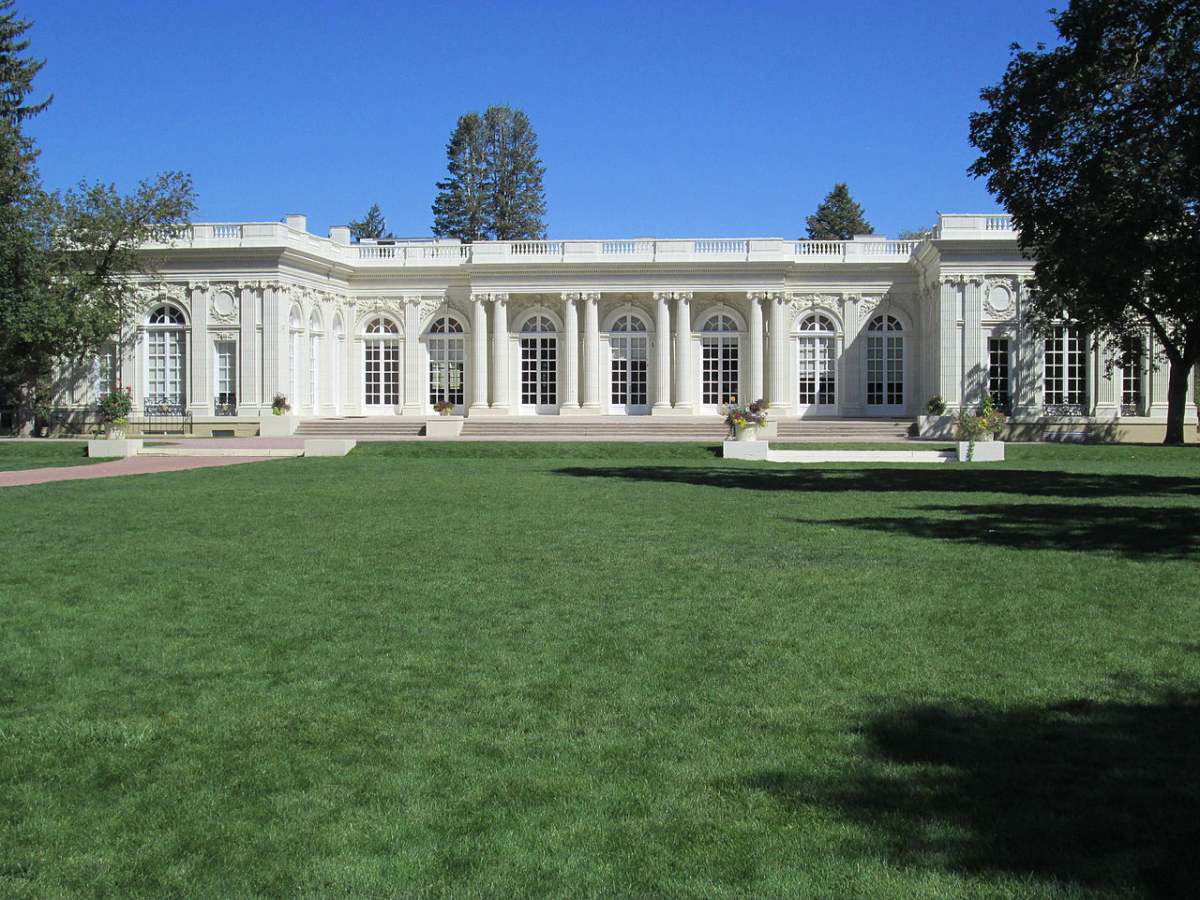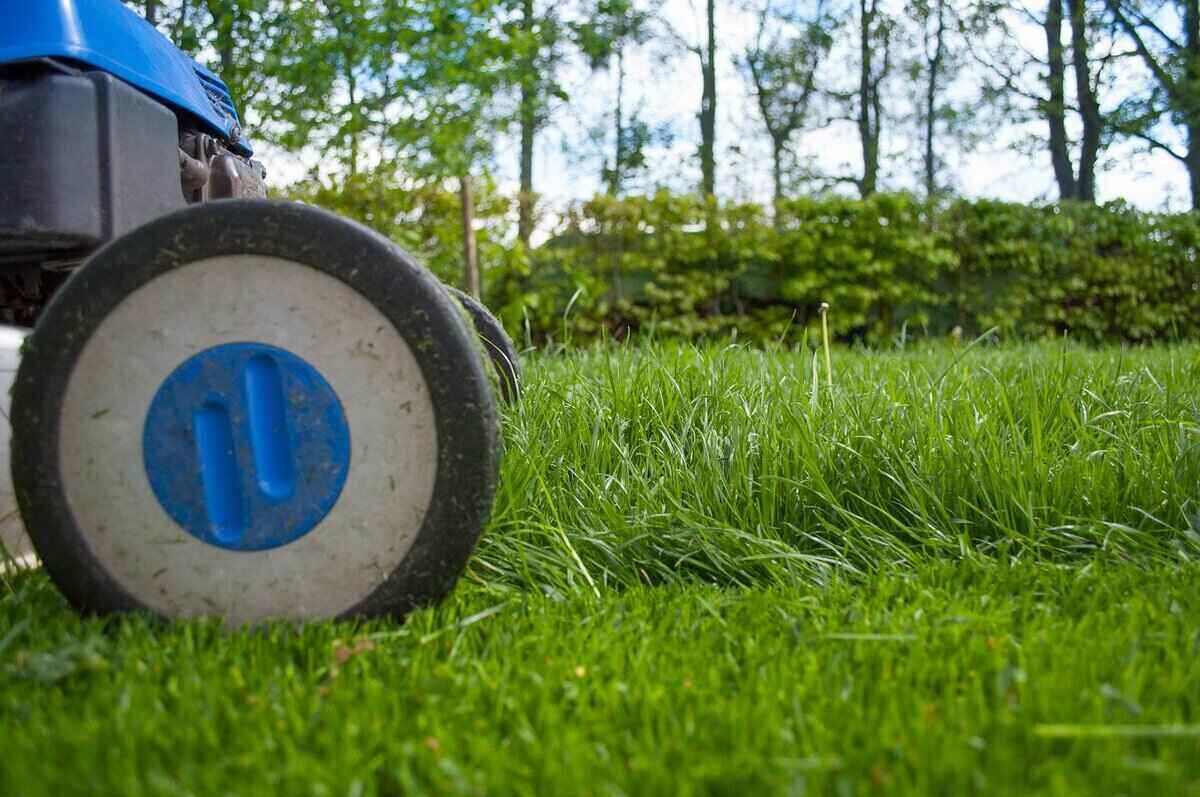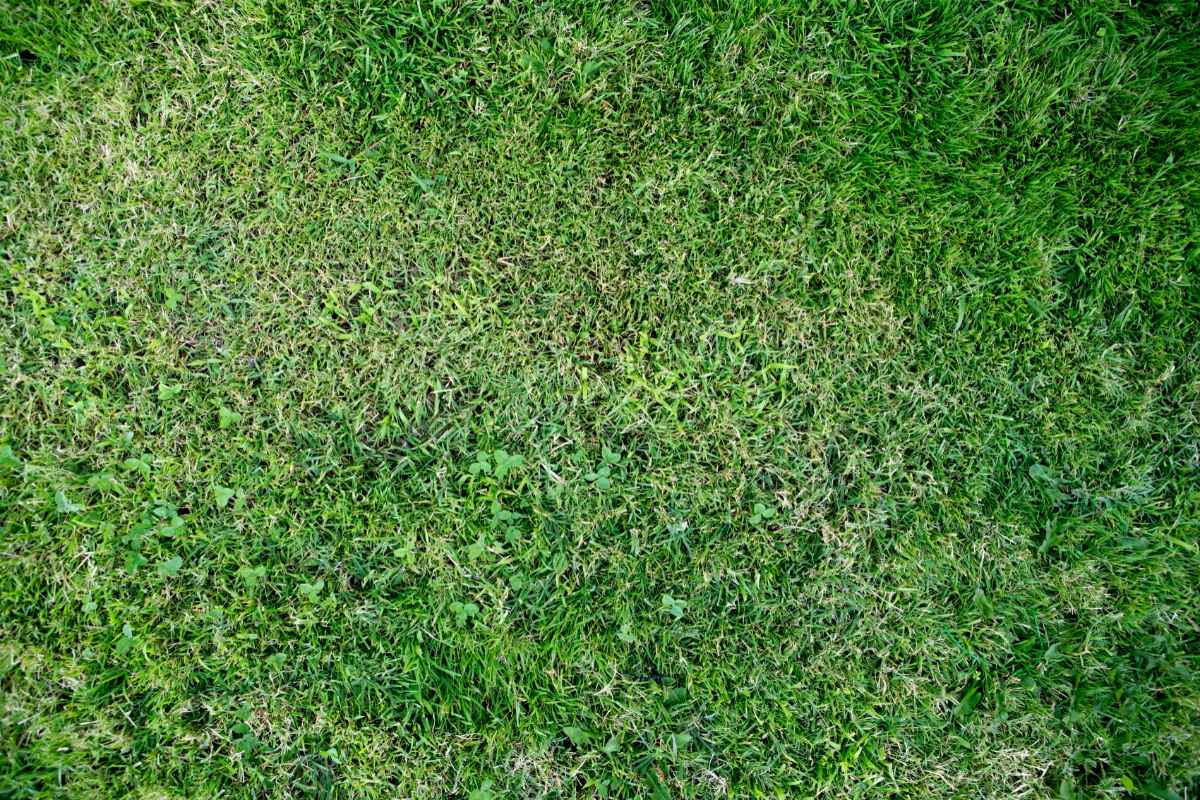
The sea of green that covers vast fields and parks may look timeless, but the grass is just like any other plant — it can’t keep growing forever. But when does grass stop growing? Grass growth generally stops when temperatures fall to 50-55 degrees Fahrenheit or below.
A main factor that affects when grass will stop growing is what type of turfgrass you have (whether it is cool-season or warm-season). What other factors come into play when it comes to seasonal grass growth, and how can you help your lawn have the healthiest dormant period possible? Let’s take a closer look.
When Cool-Season Grasses Stop Growing
Cool-season grasses are specially adapted to tolerate lower temperatures and less sunlight. So, they can stay green and keep growing later into the year — in some places, the winter season may be mild enough that cool-season grasses stay active all winter. So, at what temperature does cool-season grass stop growing?
Here are some of the most popular cool-season grasses and when they stop growing based on the temperature outside:
- Fine fescue: It usually stops growing when temps exceed 90 F or drop below 50 F.
- Tall fescue: It stops growing once temperatures reach 90 F or drop below 50 F.
- Kentucky bluegrass: Temperatures exceeding 80 F or below 50 F will cause its root growth to cease almost completely. Kentucky bluegrass will also enter a dormant state during drought.
- Perennial ryegrass: With a maximum growth temperature of 86 F and a minimum of 40 F, this cool-season grass can survive both hot summer temperatures and cold winter conditions.
When Warm-Season Grasses Stop Growing
Warm-season grasses are the powerhouses of heat and humidity, best suited for southern or coastal states. While they are adapted to hot summers, most warm-season grasses go dormant in late fall because they tend not to be very cold-tolerant.
At what temperature does this grass type stop growing? Here’s when you can expect the most popular warm-season grass varieties to stop growing, based on the temperature outside:
- St. Augustinegrass: It stops growing when soil temperatures drop below 55 F. It can keep growing through heat up to 100 F.
- Bahiagrass: Bahiagrass slows growth when temperatures consistently drop beneath 50 F. It grows best and most actively when temperatures are above 80 F.
- Bermudagrass: It stops growing when temperatures are consistently below 50 F and continues growing in heat up to 100 F.
- Centipedegrass: It stops growing when the temperature is 55 F or below. It can thrive in heat up to 95 F.
- Zoysiagrass: This option stops growing when temperatures fall below 55 F. It typically thrives in hot temps up to 95 F.
- Buffalograss: It goes dormant and stops growing when temperatures reach 50 F or below. It grows most actively in warm temperatures up to 95 F.
- Carpetgrass: It grows best between 60 F and 90 F and stops growing when temperatures drop below 50 F.
How Temperature Affects Grass Growth
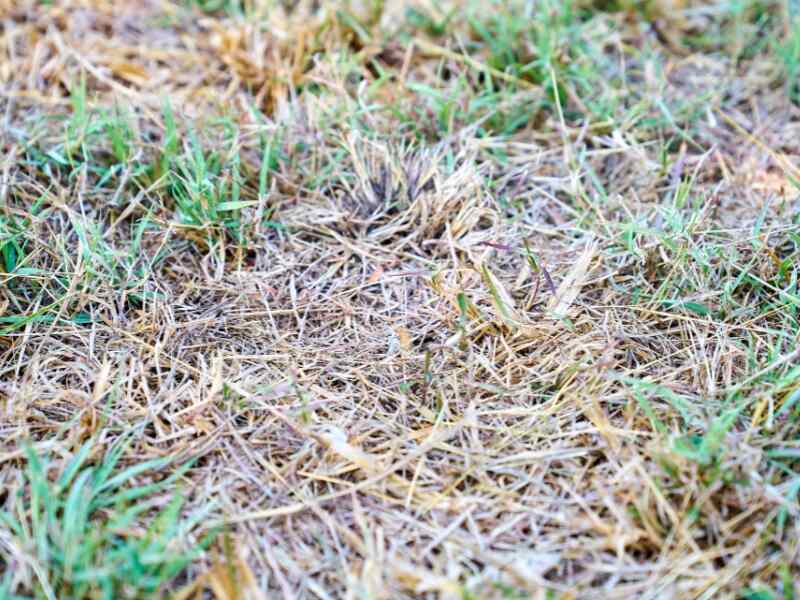
Cold weather slows us down, and it does the same to our grass. Every species of grass has a specific temperature range in which it’s most active. As soon as temperatures fall below or rise above that range, the growth of the grass starts slowing down.
When temperatures continue to drop consistently leading into winter, the grass eventually goes into dormancy or hibernation mode, which lasts until springtime. During this “hibernation,” the grass will grow very slowly or not at all. It may even fade to tan or brown, but it’s not dead, and it should green up when temperatures rise again.
Soil Temperature
Soil temperature is the single most critical variable regarding grass growth. Temperature variations will increase or decrease essential nutrients available for plant maintenance and defense mechanisms, like water uptake, decomposition of carbon dioxide, and photosynthesis — all things needed for healthy growth.
In cold weather, grass conserves energy by going dormant. This protects the delicate crown from extreme temperatures and provides an optimal environment for the plant to survive until better conditions arrive.
Grass can go dormant due to extreme heat, too. If daily temperatures have been topping out at levels significantly higher than normal for your area, the lawn may look dry and brown. However, the grass is probably only dormant (conserving energy so it can grow normally again when the weather cools down).
Air Temperature
Soil temperature and air temperature are two completely different beasts. The temperature your weather app shows is the air temperature. The soil temperature is usually about 10 degrees cooler than the average daily air temperature over a span of a few weeks.
So, you can use air temperature to guesstimate your soil temperature within a pretty reliable range. When the air temperature consistently drops to about 65 F in fall, your soil will be about 55 F.
How Grass Growth Varies by Location
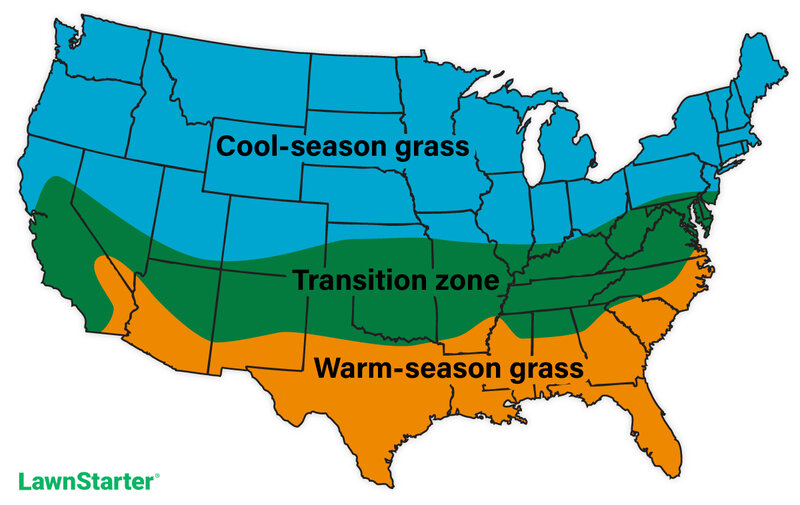
No matter where you live or what kind of grass spreads across your lawn, the temperature outside dictates growth patterns. The temperature ranges given above for cool-season and warm-season grass types are consistent across the country. However, the type of grass you can grow in your yard varies based on where you live.
Warm-season grasses are typically found in the South because they can survive the intense heat of Southern summers. They also need the South’s mild falls and winters because sustained freezing temperatures can do serious damage to them.
Cool-season grasses are typically found in the North because the summers are cooler, and cool-season grasses can’t stand intense heat. They also keep growing longer into the North’s colder fall season.
Right across the middle of the country, you’ll find what’s called the transition zone. In the transition zone, the average temperatures are suitable for both cool-season and warm-season grasses. However, cool-season grasses may struggle in summer, and warm-season grasses may struggle in fall and winter.
When and How to Do Your Last Mow of the Season
Now that you know when your grass stops growing, you can plan your last mow of the year accordingly. Pay attention to the daily temperature, and when it consistently drops to 50-55 F, it’s time to prepare your lawn for winter dormancy.
When mowing the lawn for the last time for the season, you can either:
- Mow the lawn at its usual height, the same height you’ve been using all autumn, to help prevent winter lawn diseases like snow mold and reduce thatch buildup.
- Mow a bit lower than usual to strengthen the grass’s root system and help prevent weeds.
Both of these methods — mowing low or keeping a regular height — are advocated by different lawn care pros and experts. Check out our article on the mowing height debate for more information. Choose whichever is most suited to your lawn’s specific concerns: Is your lawn more prone to weeds or fungal diseases? Do you usually see excessive thatch buildup in winter? Or does your grass need a deeper root system?
You’ll also want to sharpen your lawn mower blades before the last mow of the season. Using dull blades can leave jagged edges that create an open path for winter diseases. A sharp lawn mower blade will create a smooth, clean cut that helps your grass retain moisture and prevents damage from extreme cold.
FAQ About Grass Growth
When Does Grass Grow in Spring?
Warm-season grasses typically found in USDA hardiness zones 7-10, such as Bermudagrass, grow when the soil temperature is above 70 F, and cool-season grasses found in USDA hardiness zones 5-9 flourish when air temperatures reach 55-65 F.
Can You Make Grass Grow Faster?
Grass does grow faster if you fertilize it at the right time, as most fertilizers contain essential nutrients for healthy growth:
- Cool-season grasses should be fertilized in early spring and fall when temperatures are cooler.
- Warm-season grasses should be fertilized in early spring and summer, when they are actively growing.
It’s also important to adjust your mowing height and make sure you’re watering correctly to help the grass absorb those nutrients.
Fertilizing your grass during its dormant season will not make it keep growing or grow any faster. In fact, fertilizer could harm your grass at this time and encourage winter weeds to take over.
When Does Grass Grow the Most?
Peak grass growing season varies by grass type:
Warm-season grasses grow most actively in late spring and early summer, when the warm weather temperatures are above 75 F but below 90 F.
Cool-season grasses grow most actively in spring and fall, when temperatures are above 60 F but below 75°F. While both grass types can grow outside of these ideal temperature ranges, they will grow fastest under these conditions.
When to Call a Lawn Care Professional
The true masters of tending to a lawn understand that whatever the weather, it pays to undertake certain tasks throughout the year, from sowing and fertilizing in spring to mowing regularly in summer and preparing for winter months in fall.
LawnStarter helps homeowners find the right local lawn care pros so they can enjoy a green and healthy lawn no matter what the seasons bring. With quick and easy access to reliable professionals, you can make sure the grass keeps growing right up until it’s time to go dormant.
Main Image Credit: Jose Manuel Gelpi / Canva Pro / License

